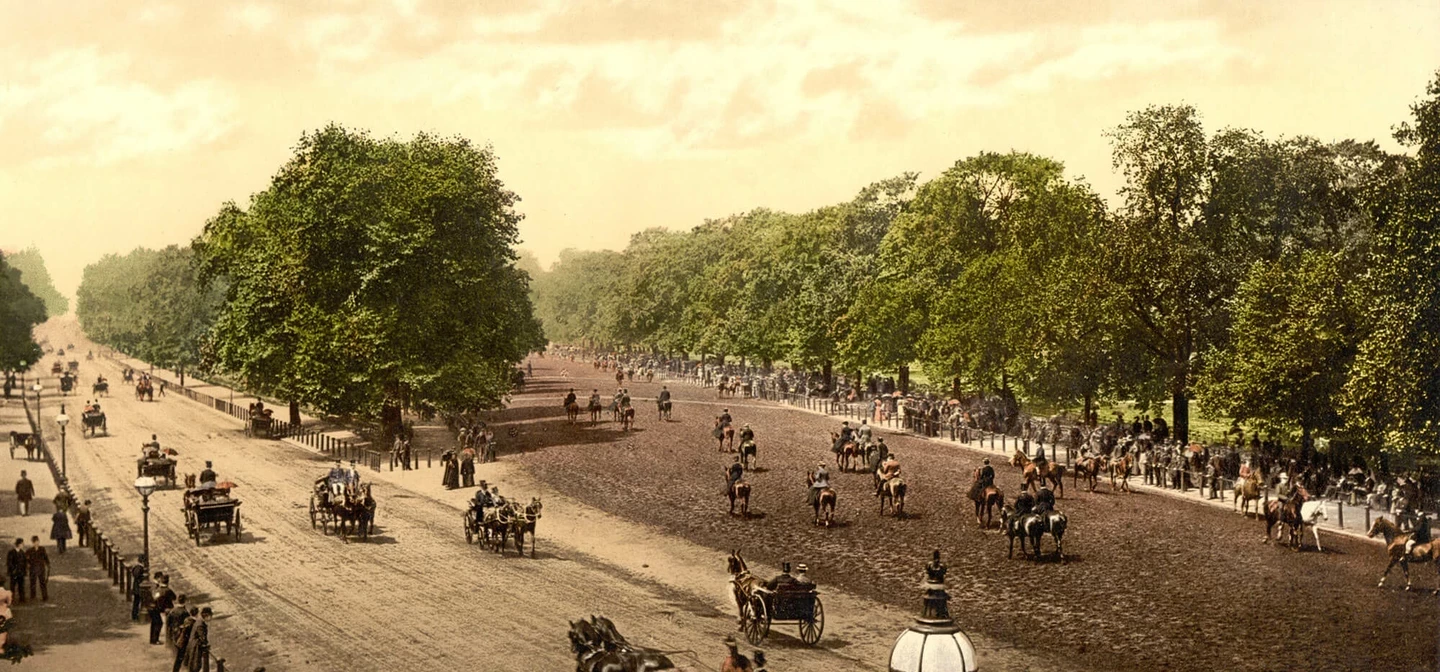
Rotten Row
Despite its forbidding name, Rotten Row is a peaceful, sandy bridleway running along the south side of Hyde Park. However, during the course of its 350 year history, it has often been far from peaceful!
In the late seventeenth century, this stretch of Hyde Park was a busy and dangerous route. It ran between Kensington Palace in the west and the seat of government in Whitehall to the east. Sinister highwaymen, on horseback and on foot, frequently robbed travellers along this road in the hours of darkness. This meant that the courtiers of William III had to run the gauntlet! Eventually, in 1690, the King ordered the route to be lit by 300 oil lamps in order to provide safe passage for carriages and riders alike. This made it one of the first lit highways in England.
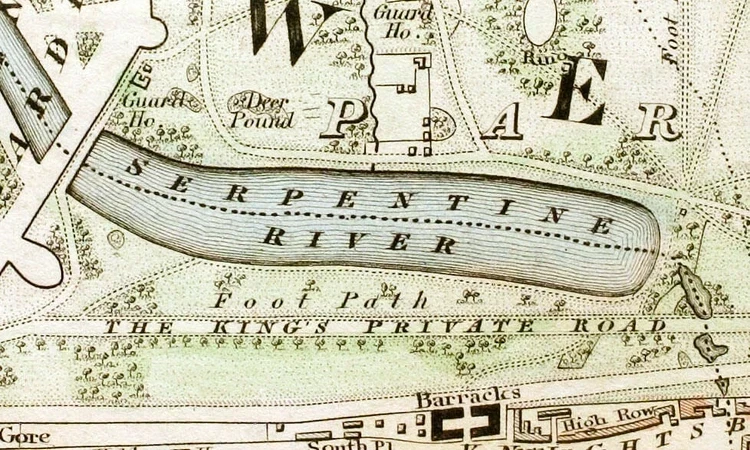
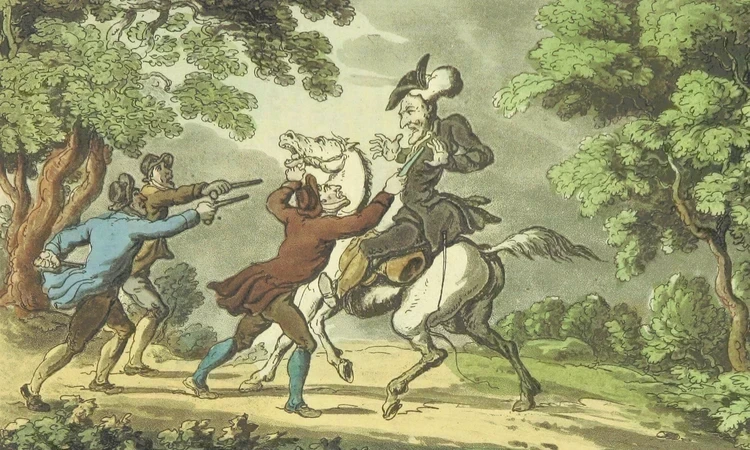
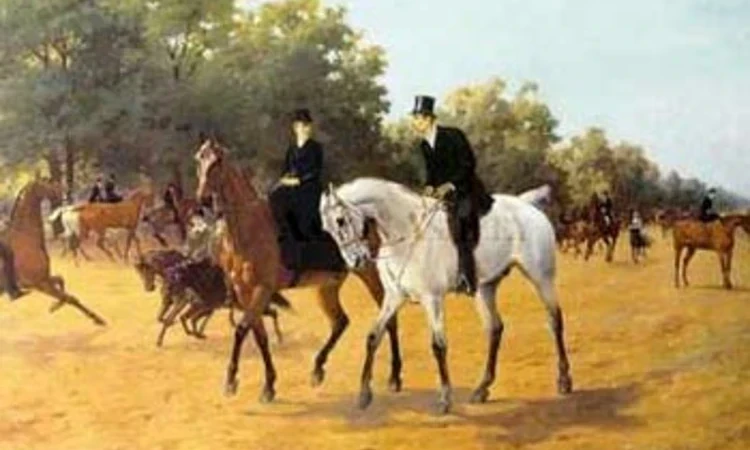
The road became known as the Road of the King, or Route du Roi in French. It is believed to be a corruption of this term that led to its present name of ‘Rotten Row’. Many other etymological theories for the name exist and there are also other Rotten Rows around England and Scotland – there is even one in Harare, Zimbabwe.
By the beginning of the eighteenth century, Rotten Row had become a fashionable and popular meeting place for London’s upper class, especially at noon and during summer evenings. The well-to-do paraded their finery on this now safe and wide thoroughfare.
During the next 150 years, Rotten Row became more and more popular, not only for the aristocracy but for the general public and London’s burgeoning middle class. Thousands would flock to the park on high days and holidays, lining the railings of Rotten Row to watch the riders and carriages. It became a great meeting place for friends, families, food sellers, entertainers and, of course, the pickpockets that would have been part of the crowd.
A poem called ‘Rotten Row’ published in the Victorian magazine Fun in 1865, gives an idea of the mood and activity along this famous thoroughfare.
Rotten-Row
Here’s a tempting bit of greenery - of rue in urbe scenery –
That’s haunted by the London “upper ten”;
Where, by exercise on horseback, an equestrian may force back
Little fits of tedium vitae now and then.Oh, the times that I have been there, and the types that I have seen there
Of that gorgeous cockney animal, the “swell”,
And the scores of pretty riders (both patricians and outsiders)
Are considerably more than I can tell.When first the warmer weather brought these people all together,
And the crowds began to thicken through the Row,
I reclined against the railing on a sunny day, inhaling
All the spirits that the breezes could bestow.And the riders and the walkers, and the thinkers and the talkers,
Left me lonely in the thickest of the throng.
Not a touch upon the shoulder – not a nod from one beholder –
As the strain of Art and Nature went along.But I brought away one image, from that fashionable scrimmage,
Of a figure and a face – ah, such a face!
Love has photographed the features of that loveliest of creatures
On my memory, as Love alone can trace.Did I hate the little dandy with long whiskers (they were sandy),
Whose absurd salute was honoured by a smile?
Did I marvel at his rudeness in presuming on her goodness,
When she evidently loathed him all the while?Oh, the hours that I have wasted, the regrets that I have tasted,
Since the time (it seems a century ago),
When my heart was won instanter by a lady in a canter,
On a certain sunny day in Rotten-row!Poem published in the Victorian magazine Fun, 1865
The use of Hyde Park and Rotten Row for such parading, however, predates the construction of the road as we know it today. Seventeenth century accounts, well before this area became a lit highway named Rotten Row, tell of carriages and fashion, picnics, races and fun.
In 1664 the great diarist Samuel Pepys records visits to Hyde Park, with friends, colleagues and his wife. He refers often to the ‘fine ladies’ seen in carriages, usually around the more popular Ring, a little further north than Rotten Row. But on more than one occasion he refers to not being dressed well enough for The Ring, or in an inferior carriage, and instead takes the air around the circumference of Hyde Park. This would almost certainly have taken him along the route now known as Rotten Row.
After the Civil War, Oliver Cromwell ruled the British Isles as Lord Protector from 1653 until his death in 1658. During that time, he often rode and picnicked in Hyde Park, though it was closed to the public until the restoration of the monarchy. During one such visit on September 29th 1664, Cromwell decided to drive the carriage and fine new horses of a friend. Contemporary accounts say he whipped the horses to a frenzy, causing him to lose control. He was thrown from the carriage, but his foot became caught and he was dragged for several minutes. During this time a pistol in his pocket went off, injuring his leg. It took Cromwell days to recover from the accident and he may have suffered longer term effects.
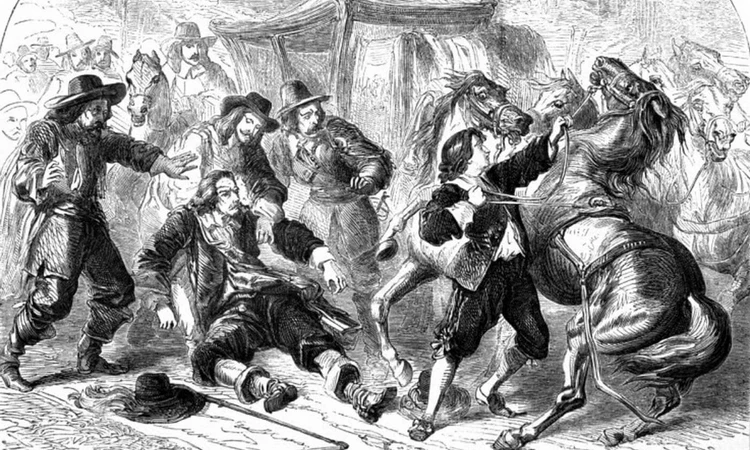
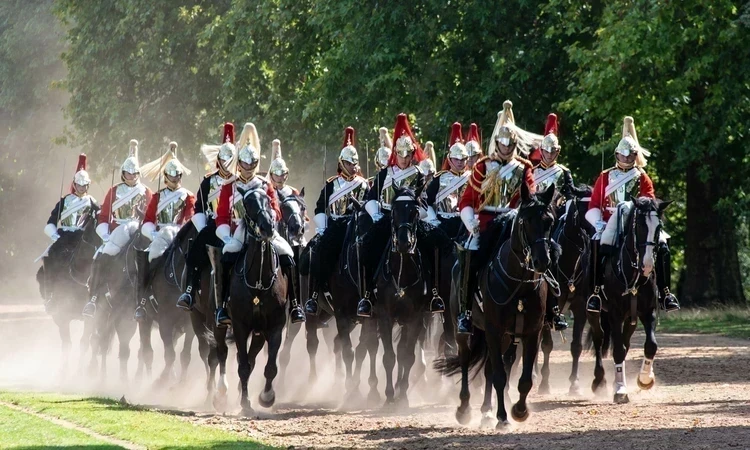
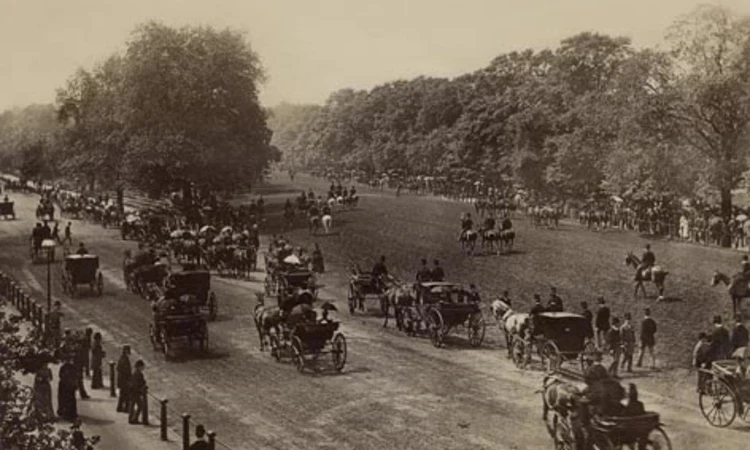
Since 1795, the Household Cavalry Mounted Regiment have been based in a barracks on the south side of Hyde Park. These barracks have been rebuilt several times over the last 200 years and today the building is a modernist tower block. The regiment’s horses are stabled on the first floor. In the early mornings civilian volunteers exercise these feisty horses, using Rotten Row to give the horses a chance to stretch their legs and canter. If you’re lucky, you might also spot the cavalry riders in their striking red uniforms practicing for ceremonials or heading off to Buckingham Palace for Changing the Guard .
Hyde Park is also home to the Old Police House, where six police horses are stabled in its central courtyard. Part of the Metropolitan Police’s mounted unit, these horses are lucky enough to exercise on Rotten Row and through Hyde Park.
Although still designated a public bridleway, Rotten Row is quieter now than ever before in its 330-year history. However, horses can still be seen every day and a couple of local riding stables provide some opportunities for the public to ride. Children on ponies are led around the park, but tend to prefer the sandy stretch on the other side of the Serpentine to the expanse of Rotten Row. Carriage and riding horses would once have been kept in the mews behind the big houses that back onto the park, but today many of these have been converted into desirable apartments. Very few, if any, members of the public have privately stabled horses nearby.
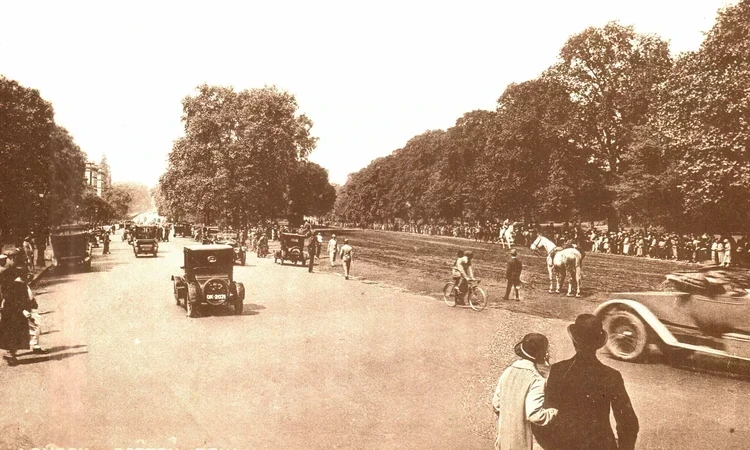
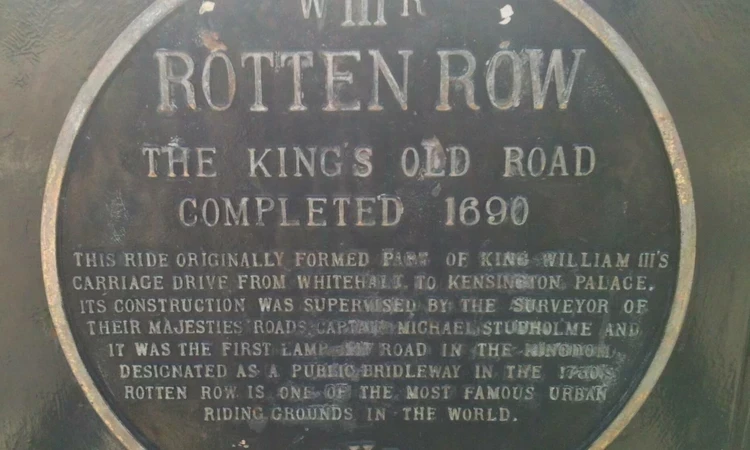
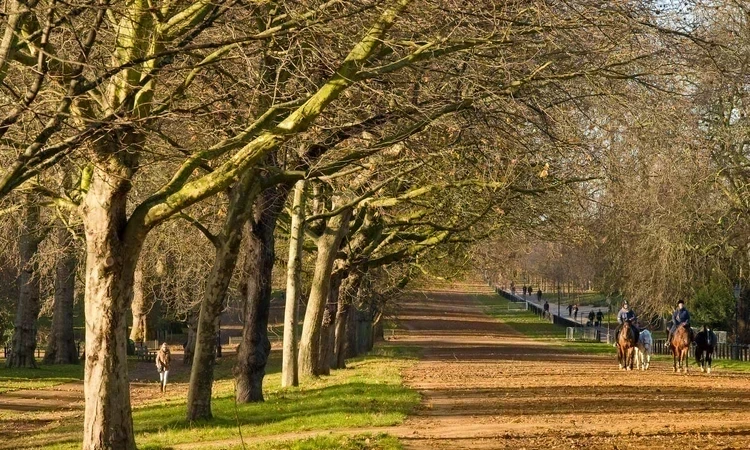
A Royal plaque commemorating 300 years of Rotten Row was erected in 1990.
ROTTEN ROW - The King's Old Road, Completed 1690. This ride originally formed part of King William III's carriage drive from Whitehall to Kensington Palace. Its construction was supervised by the Surveyor of their Majesties' Roads, Captain Michael Studholme and it was the first lamp-lit road in the Kingdom. Designated as a public bridleway in the 1730s, Rotten Row is one of the most famous urban riding grounds in the world.
The wide and sandy expanse of Rotten Row is now a peaceful place to walk, lined by tall London plane trees on one side and the Serpentine intermittently glimpsed between trees on the other. It’s a good place to muse and ponder, and to watch birds taking a sand bath!
Related Articles
-
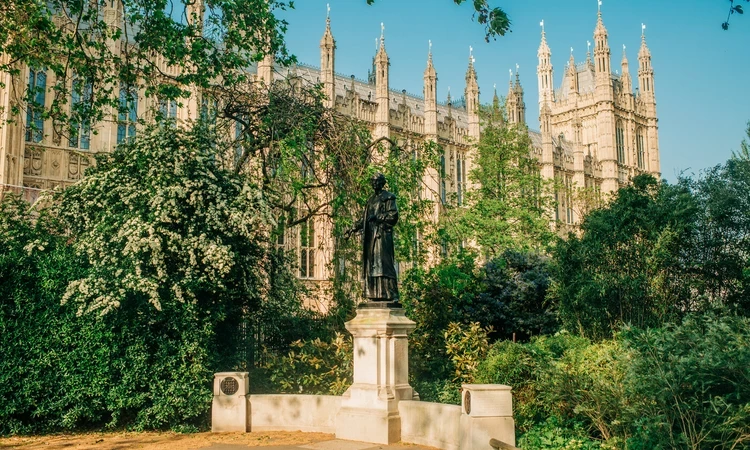 Listen
ListenWomen in The Parks
In this episode, recorded for Women’s History Month, we look at some of the great women associated with the parks.
-
 Read
ReadWomen of The Royal Parks
Women's History Month takes place each March, highlighting the contributions of women and their achievements.